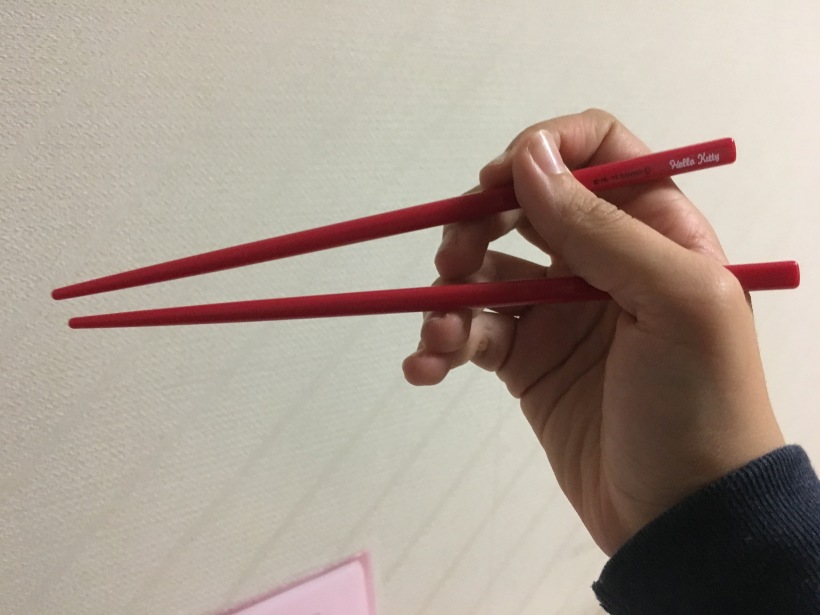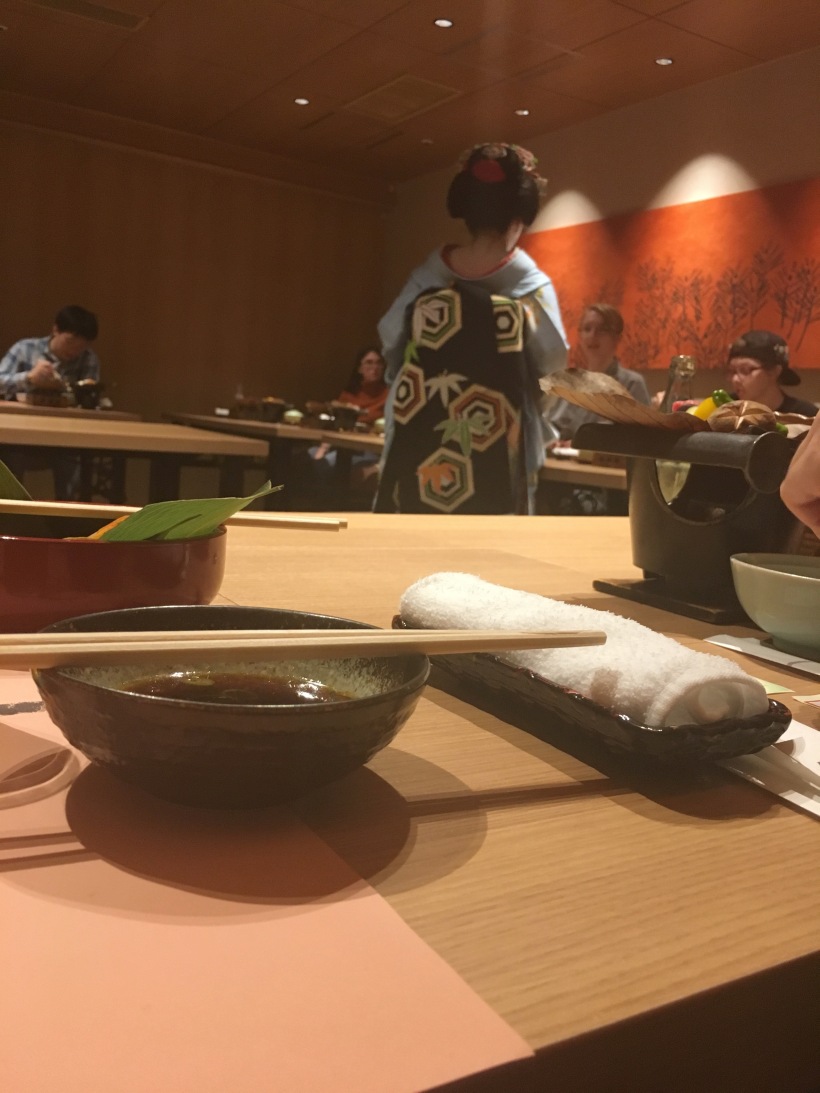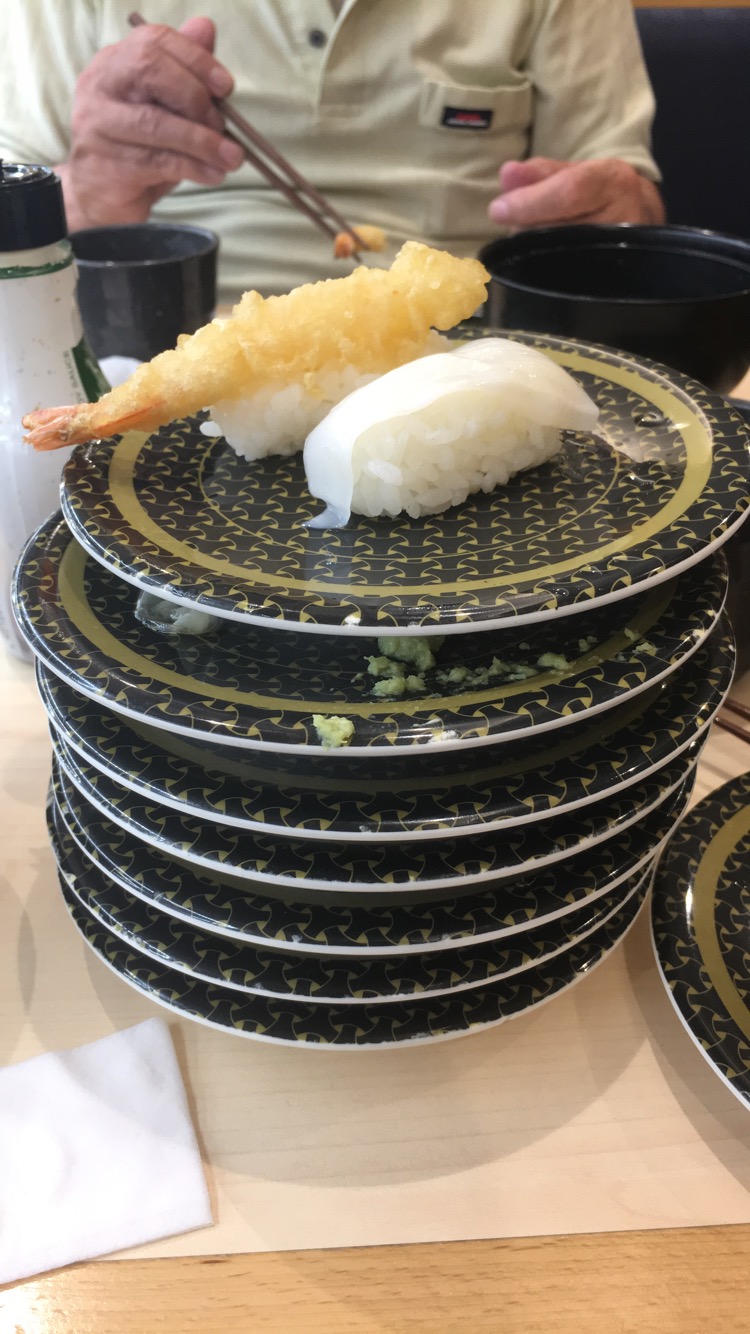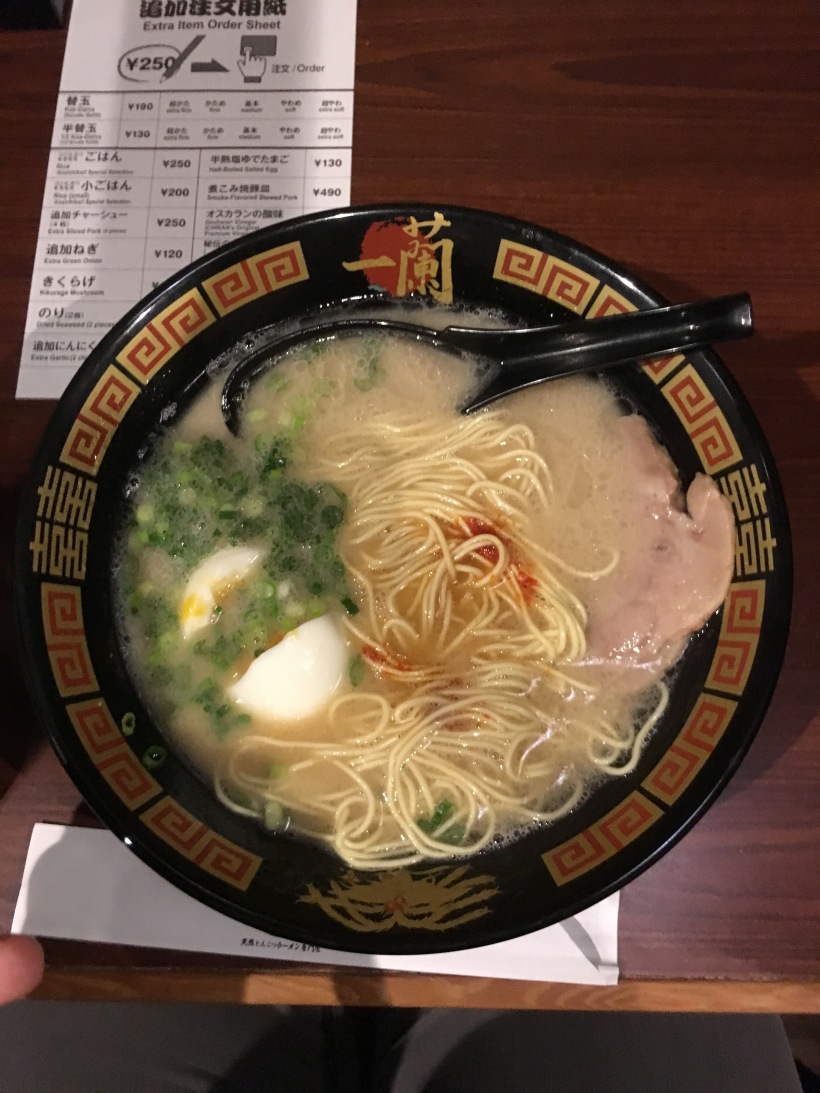Welcome back to another post on Gaijin Japan Adventure. Hope y’all had a good week, that did not involve writing a mini essay in duplicate or a marathon of various quizzes, essays and presentations. Today, I thought I would talk about my personal favorite sightseeing topic, food. Or specifically, how to food in Japan.
In doing so, I thought I would give y’all a general idea of what a typical meal would look like, as well as debunk some myths and tell you some do’s and don’t’s.
So why don’t we start with the utensils. By which I mean everyone’s favorite: chopsticks. Now, I’ll let you in on a little secret that has been brought to my attention recently. Not all Japanese people know how to use chopsticks properly. In fact, one of my teachers has shown me pictures of Japanese TV personalities that were caught on camera using their chopsticks incorrectly. Including Abe-san (Japanese Prime Minister).
To hold them correctly, first, hold the lower chopstick in the space by your thumb and propped up on you ring finger. Then the second (upper) chopstick you prop up on your middle finger and hold it between your forefinger and thumb. Like this.

The other acceptable holds are crossed chopstick (which I’m honestly not sure how to achieve on purpose) and holding the upper chopstick between your middle and forefingers.
The unacceptable way to use chopsticks is to stab things with them. That is a no-no. You don’t do that unless you want to get looked upon in scorn. Honestly, Japanese people would much rather you’d use your hands to place things on your chopsticks then see you use them as a spear. They will even provide a handy hand towel to wipe your hands afterwards.
Though they do have a fondness for skewering food on sticks, and occasionally will use one wooden chopstick as the skewer. But that is another topic that will be explored in a post on street/festival food.
If you’re having trouble figuring out how to hold Japanese chopsticks properly, my friend tells me you should practice with Korean ones. They are made of metal and flatter than the rounded Japanese style chopsticks, which apparently makes them really hard to use, if you’re not holding them properly.
One other thing you never do with chopsticks: if you are passing someone food, you never, ever, do so by passing it between chopsticks in midair. That’s how they pass the bones of their dead relatives during cremation. Obviously that association doesn’t mix well with food.
The proper way to “pass” food is to just use your chopsticks to take something off another person’s or communal plate. Or let them put it on your plate. Some people may prefer it if you use the back-ends of your chopsticks, that haven’t been in your mouth, but honestly, most Japanese people don’t care.
However, a thing that I have noticed is that, while I’ve been told you shouldn’t rest your chopsticks on your plate, but on a little chopstick holder, most people I’ve seen go right ahead and use their plates. Though, if you’re eating at Ryokan (旅館) Japanese style inn, you may get your chopsticks taken away by accident.

Chopsticks are very versatile and are used to eat a range of foods. I’ve used them to eat: rice, salad, cherry tomatoes, fruit, fried egg, fish, regular boiled egg, pancakes, the list goes on. The only problem is figuring out how to cut things. Because you can’t bring up an entire huge piece of salmon up to your mouth with them. Now remember, you don’t usually get handed a knife. What I usually do is I press the bottom chopstick into whatever I’m trying to cut and then push the thing apart using the other one. If it’s soft enough, that should do the trick.
Now, while chopsticks remain the primary utensil, they are not the only one. Japanese people do use forks and spoons, occasionally. They tend to use spoons to eat things like curry rice (カレーライス), fried rice (chahan, チャハン) or porridge. This has to do with the fact that rice that’s covered in something becomes unglued and very hard to eat with chopsticks. Though the spoon may look different than what you’re used to, since traditional Japanese spoons look like a mini ladle.

Chahan and Ramen with Japanese-style spoons at a “Chinese” restaurant.
The forks mostly come out during dessert time. Which is actually a thing in Japan, they do have dessert and they definitely have traditional sweets. They just tend to use fruit for the former. But in either case, cakes and fruit (always neatly sliced) are served with dessert forks. If the Japanese people serving you decide you look particularly helpless at a restaurant, you may get a real regular sized fork. But for the most part, the ones I’ve seen were meant for eating desert.
Speaking of meals, those are usually served on plates. In Japan, a lot of them. The Japanese have decided to go with aesthetics, rather then practicality in this matter. They will serve you small portions of different foods on equally small plates and bowls. The picture at the very top? That’s breakfast I had a ryokan, Dinner the previous night included over 20 separate dishes. Per person. As you can imagine, you’d have to clear some of those off before they bring the rest out, so that’s where your chopsticks may disappear on you, if you’re not careful.
Anyways, since I’m not in any way an expert on Japanese table setting, I’ll only mention a few dishes that I know about.
First off, rice. It will always come in a bowl, whether plain or in porridge form. Chahan, usually gets served in a shallower bowls. And don’t let Japanese people fool you, they don’t only eat their rice plain. They have an entire industry around something called furikake (ふりかけ)、that is, dry rice favoring. I’ve had plum, seaweed, dried vegetable mix and wasabi-salmon furikake myself. But I’ve heard of flavors like: tonkotsu ramen (bone broth), curry and various others.
They will also put raw or partially fried egg on their rice, something called yamatoimo (大和芋) after it’s been turned into a goop, and everyone’s favorite: natto (納豆). Speaking of natto, which are fermented soy beans, if you like it and you ask for it yourself, you will amaze your Japanese friends. It will literally blow their minds that a gaijin likes natto. You may also get asked several times if you’re really fine with it while you eat. For those who have never tried it, the reason why people don’t usually like it is because it smells and is somewhat slimy in texture. The taste is not particularly strong.
The one thing Japanese people don’t put on their rice is soy sauce. Mostly because that makes the rice hard to eat, since it gets wet and doesn’t stick together anymore. Also soy sauce will probably be in every single other dish you get served, you don’t need more on your rice.
Fish usually comes on long rectangular or oval plates. Unless we’re talking sashimi and sushi in which case small round plates are the norm. Especially in kaitenzushi places (回転ずし), which are conveyor belt sushi. They are quite popular in Japan and quite cheap comparatively. Some of the restaurants will let you turn in your plates (of which you will have a lot) in the form of a game that you can win small prizes, like key-chains.

Curry rice, omelette rice and similar dishes, usually get served on a flat round or oval plate with rice and curry side by side. Or under the omelette. Usually with non-Japanese utensils accompanying them. By which I mean a spoon.
Soups like ramen, miso, udon, nabe, oden and others of course get served in bowls of varying sizes and depths. Miso shiru, fermented soybean paste soup, is usually served in a small lacquered wood or plastic bowl and may come with a cover. Nabe and oden, both hot pot style dishes, are usually eaten out of bigger and flatter ceramic bowls, but are usually served in a ceramic pot as a communal dish. Ramen is the odd one out and usually served in a straight ended bowl. With a ladle spoon. And chopsticks.

Now, the general rule of eating in Japan is you bring your dish up to your mouth, instead of leaning over the food. Especially smaller dishes, like the rice or miso should be brought up close to your mouth, so that you don’t have to worry about spilling anything. You can get away with leaning over your food like a dog (a comparison I heard here in Japan) thanks to your handy gaijin pass, but I recommend you at least try to bring the dishes up. In fact, Japanese people prefer it if, instead of leaning down, you’d just stick your face into the uplifted bowl and start shoveling your food in with your chopsticks. Which they occasionally do.
Also, Japan is also one of the few places in the world where slurping your noodles as loud as you can is, not only allowed, but also encouraged. All I will say about that is that the cool air you suck in helps with not burning your mouth every time you eat a piping hot Ramen. That, and noodles are hard to get into your mouth otherwise if you’re eating them with chopsticks.
Now, as for eating out, here’s some helpful tips.
One, you don’t leave any tips. Japanese people consider the service fee included in the food price and leaving extra money may actually trouble your server and not make him happy. Because they will feel like they have been handed an extra obligation that they cannot repay you. So be nice and don’t stress out your poor waiter by tipping.
Two, when you eat out or even just buy food at the convenience store you will likely receive a small moist towel or towelette. It’s called an oshibori (おしぼり). This is for wiping your hands before you eat. You may of course wipe your hands again after you’re done, if you wish to.
Three, unless its a fancy place, you will likely have to walk to the cash register to pay. They’ll usually bring your bill with your food, so you won’t have to worry about flagging down a waiter when you’re finished. Some restaurants will even have a button at the table that you push if you want to summon the staff, and most places have a pitcher of water for refills on the table. So, you won’t get the server hovering over your shoulder like in the States.
Though you may want to make sure you brought cash, because quite a few restaurants take nothing else. Actually unless it’s a huge chain store or a conbini, you can’t assume the place will take card. Japan remains a cash based society.
This is it for today. Hope y’all enjoyed reading my food rambling. This is a topic that I’m personally very passionate about, so you can look forward to more post on it. Though next time I would like to talk about a Ninja and Samurai festival I’ve been to. All comments, questions and suggestions are welcome.
I got a cameo 😭😭😭✨
(“Chinese” restaurant 😂😂😂)
LikeLike
You’ll get even more of a cameo in the ninja and samurai festival post 😊
LikeLike
Can’t wait 😁
LikeLike
Now I know it for sure! I could NEVER live in Japan! 🙂
LikeLike
Why not?
LikeLike